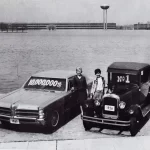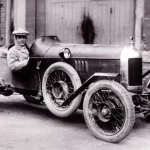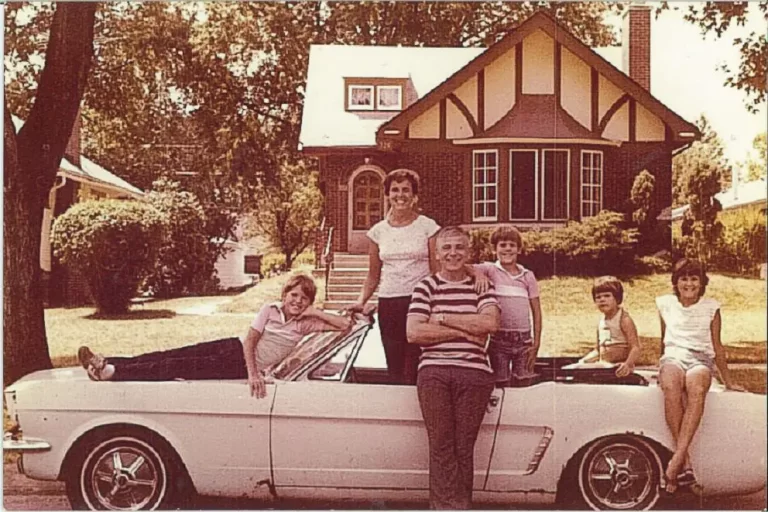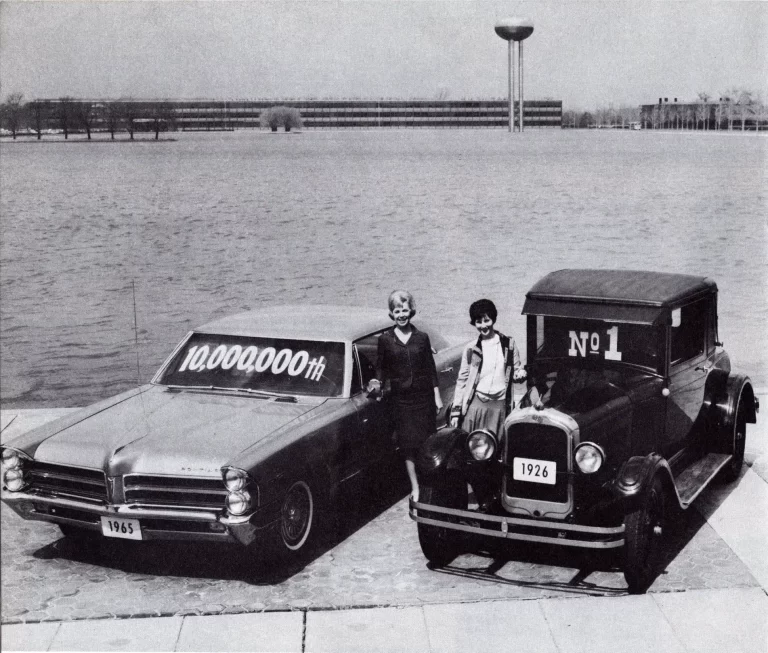
French scooter company ACMA introduced the Vespa 400 microcar in Monaco on this day in 1957. Company execs created much fanfare for the launch, as ACMA had invited three celebrity racing drivers to the press event. In its first year more than 12,000 were sold, but that number dropped significantly to 8,717 in 1959. Sales continued to slump until 1961 when popularity fell so far production ceased. Many people believe the fuel efficient, space saving car failed due to the minor inconvenience drivers went through to mix oil with the gasoline when filling up the car’s two stroke engine.
You ever see Jerry Seinfeld in Comedians in Cars Getting Coffee? It’s really good. Seinfeld owns a bunch of crazy cars. He might even have one of these, I’m not sure, haven’t had a chance to ask him yet. You know what’s really crazy about this car? It got 48 miles per gallon. In 1957.

A History of Oil
Back then oil and gas probably seemed like a renewable resource. You just keep pumping it out of the ground, never ends! So who cares how much gas a car uses? All that matters is that its cheap. At some point people realized there were negative consequences to the ubiquitous use of oil, but that was way later. Well, it was later anyway. In 1968, for example, The Stanford Research Institute did a study on the long term effects of Carbon Dioxide, and presented the results to American Petroleum Institute. Among their findings:
“Significant temperature changes are almost certain to occur by the year 2000 and these could bring about climatic change…If the Earth’s temperature increases significantly, a number of events might be expected to occur including the melting of the Antarctic ice cap, a rise in sea levels, warming of the oceans and an increase in photosynthesis…It is clear that we are unsure as to what our long-lived pollutants are doing to our environment; however, there seems to be no doubt that the potential damage to our environment could be severe.”’
Sure, you say, but that was just a couple nerds from Stanford! Why listen to them? Well, the science is irrefutable, as demonstrated in hindsight by its near absolute accuracy. While it may not be obvious to someone not educated in chemistry, the logic is straightforward. Infrared light from the sun bounces off of the earth. Oxygen and nitrogen are transparent to this light, it simply passes through them, and then out of the atmosphere all together. Carbon dioxide, however, absorbs infrared light, converts it to heat, which is radiated, thereby warming the temperature of the atmosphere itself. Without the carbon dioxide, and other greenhouse gases, that infrared light wouldn’t be converted to heat. As it turns out, burning fossil fuels releases carbon dioxide into the atmosphere. So, burning fossil fuels causes global warming. It would be obvious even to those ancient and backwards people of 1968. Hell they wouldn’t even land human beings on the moon for another year! Idiots.

So the API knew. Exxon knew even more, those fine folks who dumped 11 million gallons of oil into the ocean. Exxon knew because they hired experts in the field, men such as James F. Black who had briefed Lyndon Johnson on the possible ramifications of climate change due to carbon dioxide emissions in 1965, a report that stated such emissions, “may be sufficient to produce measurable and perhaps marked changes in climate” by the year 2000.
The work Black and his team did only confirmed these initial hypotheses. In 1977 they made a presentation to Exxon’s chief executives to warn them of these dangers. Exxon continued to investigate these effects on the oceans, the ice caps, and the forests. All of the information, from the scientists they had hired themselves, demonstrated the danger inherent to the continuous use of fossil fuels. Exxon was establishing a reputation as a major research center for the effect of carbon dioxide, even gaining praise from Ronald Reagan for their efforts, even as it made billions from selling the very product at the heart of the actual and potential damage to the planet.
Oil Company Scientists
Ultimately, Exxon took all of this critical and empirically proven research that they had paid to produce, and took a bold stance on it. They stood before the world and said, “This is inconclusive.” Thus began the amazing degradation of science into a matter of opinion. Exxon’s strategy in the early 2000s, developed in collaboration with George W. Bush and Dick Cheney, as climate change had become a truly worrisome issue to consumers and voters everywhere, was to point out that some scientists disagreed. Amazingly, the media just went along with it. They had ad space to sell, after all, and oil companies were buying, Despite the overwhelming majority of scientists, particularly those that had been employed by the oil industry itself, stating the obvious fact that carbon dioxide causes warming in the atmosphere, the media presented it as a two-sided issue. Many news outlets continue to do so, even as the arctic ice melts, Europe has heat wave after heat wave, mega-hurricanes destroy the southern states, and the western states burn to the ground.
People didn’t want to drive a car with a two stroke engine, I don’t even want a two stroke lawnmower, but those were never the best option. Rechargeable batteries were invented in 1859, about 30 years after people had started building electrical carriage prototypes. By 1896 you had the Electrobat, which could go 20 miles per hour, around the same time the fastest car in the world was going 35 miles per hour. Fast forward to 1960 and you have the Henney Kilowatt, essentially an electric Renault Dauphine. It went 60 miles per hour with a 60 mile range, did it need work to be fully functional? Yes, of course. Was it? Nope, it was discontinued pretty much immediately. You have to go all the way to 1997, the year of the first Toyota Prius, to find a viable electric car with maintained production.

It never had to be that way. Electric cars have been in the works for 150 years. Titans of the oil industry have known about the dangers of global warming for 60 years. A small investment into R&D could have saved us from the monstrosity that is global warming today. The only reason it didn’t happen was because a few people, very few, were getting fabulously wealthy off of fossil fuels. They could have also gotten fabulously wealthy off of renewable energy, but why bother? When your only concern in life is the accumulation of wealth, a mere thing like the end of an inhabitable planet doesn’t mean anything.
Future of Cars
Cars are cool. Imagine a world in which all of our cool cars ran without destroying the world around it. People could still bring out their crazy old smoking cars on occasion, but they would be the exception, while cars running on batteries charged by the sun itself raced around the planet without leaving a trace. It’s not too late! But it is getting close. The problem is, how do we get the majority of people behind the wheel of an electric car within the vanishing time frame we have left?
I’m going to tell you something, and I’m not ashamed to say it. I hate Nazis. They are the worst, just absolute scum of the earth. All of them, especially the ones still lurching about the planet today. The guy in charge was the biggest scumbag of all. He often gets credit for the invention of the Volkswagen Beetle, but it turns out this is an unearned accolade. He said he was going to mass produce a car and provide it cheaply to the German people, but as of 1938 only 600 had been distributed. Once the war started slaves kept building them for military use. At the end of the war the cowardly little maggot killed himself.
Where Hitler failed, as he did in all things ultimately, let us now try to succeed. Imagine a brand new all electric car available to anyone who wanted one for $10,000. It wouldn’t be a Tesla, or even a Prius. More along the lines of a 1980s Honda Civic. Bare bones but fully functional. Who would make such a car? Not any of the businesses making cars now, unfortunately. Their prize is ever larger profits. We need to look to an organization who is not charged with massive accumulations of wealth, but of providing for the people where ever and however possible. The producer of The People’s Car can only be the United States government.
I know, I know, you can stop laughing, or screaming, I get it. It isn’t as crazy as it sounds though. The government can and does mass produce products that benefit us all. Roads, for example. Post offices, schools, electricity, everything used by the police and the military, everything used by teachers besides the thousands of dollars in stuff they buy themselves every year. This would an extension of that infrastructure. An environmental mandate that would also happen to produce tens of thousands of decent paying jobs. If they could sell the cars at cost it wouldn’t even add to the deficit, though no one in government actually cares about that kind of thing. By holding themselves to the standards by which they hold the rest of the industry the cars would be safe and effective as well as affordable. Don’t forget, Lyndon Johnson knew about the dangers of climate change, and didn’t do a thing. The oil lobby today is one of the largest there is. They kind of owe us this one.
The fact is most people can’t afford a used Prius, much less a new Tesla. Big Oil has spent 60 years knowingly destroying our climate, and our government has looked on and grinned. Whenever progress was made, the next president rolled it back. The people need cars, and they deserve an option that doesn’t contribute to their own demise. Let the government build the wheels, and we can all drive into a cleaner, more just, and entirely inhabitable future, together.
This article has been brought to you by The Church of Black Coffee, a non-denominational church of philosophic inquiry.
Bibliography:
https://forecast.uchicago.edu/archer.ch4.greenhouse_gases.pdf
https://www.epa.gov/emergency-response/exxon-valdez-spill-profile
https://www.zmescience.com/research/technology/fastest-cars/
https://global.toyota/en/prius20th/evolution/

















